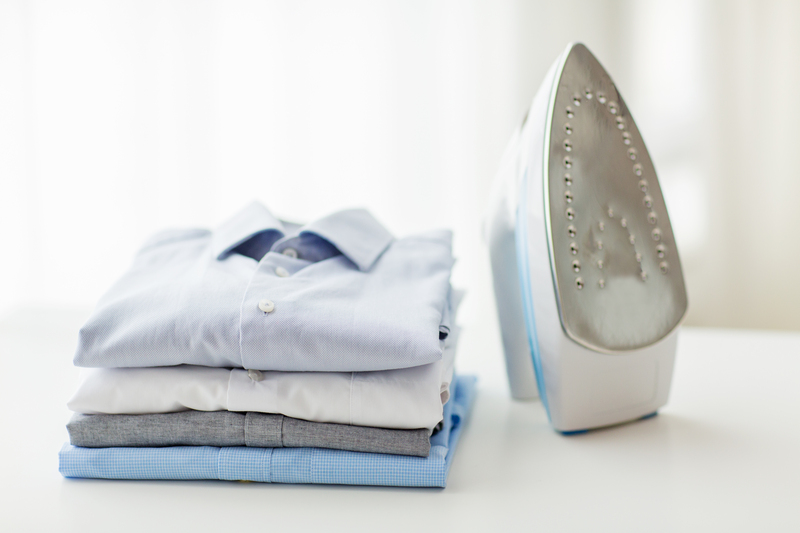Dive into the world of velvet care and enjoy spotless curtains
Posted on 03/09/2025
Dive into the World of Velvet Care and Enjoy Spotless Curtains
Velvet curtains bring luxurious sophistication and a soft, sumptuous texture to any space. However, maintaining their pristine beauty requires proper velvet care. In this comprehensive guide, you'll discover effective ways to clean, maintain, and enjoy spotless velvet curtains for years to come. Whether you're dealing with daily dust or unexpected stains, our expert advice will help you keep your velvet drapes looking as stunning as ever.
Why Velvet Curtains Require Special Care
Unlike ordinary fabrics, velvet is distinctive for its plush pile and rich color depth. This elegance comes with unique challenges:
- Delicate fibers: Velvet is woven with looped or cut fibers that are easily crushed or marked.
- Attracting dust: The nap of the fabric can accumulate dust and pet hair more readily than other curtain materials.
- Moisture sensitivity: Water and liquids can stain or cause the pile to mat.
- Complex stains: Velvet's thickness can make cleaning spills and spots tricky.
Understanding how to care for your velvet curtains can prevent damage while preserving their opulent appearance.

Understanding the Types of Velvet
Before beginning any velvet care routine, it's crucial to identify the type of velvet you're working with. Here are the most common varieties:
- Cotton Velvet: Natural fibers, very soft, and generally more absorbent.
- Silk Velvet: Luxurious, expensive, and exceptionally delicate.
- Synthetic Velvet: Made from polyester or rayon; it's more resilient and easier to clean.
- Crushed Velvet: Known for its textured, shiny surface.
- Velveteen: Shorter pile and firmer structure, sometimes easier to maintain.
Tip: Always check the manufacturer's label--some types of velvet can withstand light hand washing, while others require professional care to avoid damaging the nap or color.
The Essential Toolkit for Velvet Curtain Care
- Soft-bristled brush or velvet brush
- Lint roller or sticky tape
- Vacuum cleaner with upholstery attachment
- White microfiber cloths (to avoid color transfer)
- Mild detergent (suitable for delicates)
- Distilled water
- Steamer (optional, but ideal for velvet nap revival)
Gathering the right tools makes spotless velvet curtain care easier and helps you avoid accidental damage.
Step-by-Step Guide to Regular Velvet Curtain Maintenance
1. Weekly Dusting and De-Furring
- Gently brush the curtain's surface with a soft-bristled brush or velvet brush to remove loose dust, lint, and pet hair.
- Use a lint roller or sticky tape for stubborn debris.
- For deeper dusting, attach the upholstery nozzle to your vacuum and set it on the lowest suction setting.
- Always move in the direction of the velvet nap to prevent crushing the pile.
2. Monthly Deep Refresh
- Take curtains down for easier handling.
- Give them a light shake outdoors to release trapped dust.
- Optional: Use a handheld steamer to gently revive the pile, moving the steamer in downward strokes.
Never rub or wring velvet fabric, as this can irreversibly compress the fibers.
Spot Cleaning Velvet Curtains: Remove Stains Without Damage
Immediate Action
- As soon as a spill occurs, blot gently (do not rub!) with a clean, white microfiber cloth.
- If liquid, press a dry cloth into the area and repeat with a fresh cloth until no more moisture is absorbed.
- For solid or sticky stains, remove excess by lifting (never scraping) with the edge of a spoon.
Stain Removal Method
- Mix a small amount of mild detergent with distilled water. Test it on a hidden spot of the curtain.
- Using a clean, slightly dampened white cloth, dab the stain gently. Avoid soaking the fabric.
- Use a separate dry cloth to absorb as much moisture as possible.
- Allow the area to air dry, away from direct heat or sunlight.
- Once dry, restore the nap with a soft brush or use a steamer for best results.
Important! For silk or antique velvet curtains, spot cleaning can lead to water marks or damage. If in doubt, seek professional cleaners experienced with specialty fabrics.
The Do's and Don'ts of Velvet Curtain Cleaning
- Do patch-test any cleaners or water on an inconspicuous area first.
- Do keep direct heat and sunlight off velvet curtains during drying to prevent fading.
- Do use steam treatments to gently uncrush the pile.
- Don't use bleach, harsh chemicals, or abrasive tools.
- Don't wash delicate velvet in a regular washing machine unless the care label allows it.
- Don't twist, wring, or rub velvet fabric.
Professional Cleaning vs. DIY: Making the Right Choice
Certain situations call for professional velvet curtain cleaning:
- Very large or custom-made velvet drapes
- Silk or antique velvet
- Severe stains, watermarks, or odors
Professional services use specialized equipment and solvents designed for delicate nap, helping you achieve truly spotless velvet curtains without risk.
Nonetheless, many synthetic velvet curtains can be hand washed at home:
- Fill a tub with cool or lukewarm water.
- Add a mild detergent for delicates.
- Submerge and swish gently. Do not rub!
- Drain and refill the bath with clean water, swishing curtains to rinse.
- Press out excess water by pressing (never wringing) between towels.
- Hang to dry, ensuring curtains are supported to avoid stretching the fabric.
Always follow your manufacturer's recommendations! Velvet curtain labels may specify "dry clean only," in which case DIY cleaning could cause irreparable damage.
How to Steam Velvet Curtains for a Luscious Finish
Steaming is one of the best ways to restore a crushed or flattened velvet pile:
- Use a handheld steamer or iron with a steam setting (never touch hot metal directly to velvet).
- Gently steam curtains from the top down, maintaining a safe distance between the nozzle and the fabric.
- Allow steam to relax the fibers naturally. For stubborn creases, use your hand (covered by a white cloth) to fluff the nap upwards but never press directly on the pile when it's wet.
Pro tip: After steaming, let curtains air dry completely before drawing them closed to prevent mildew or odor.
Dealing with Common Velvet Curtain Problems
1. Creases
- Gently steam the area and brush the nap with a velvet brush in its natural direction.
- Avoid folding or crushing curtains when storing.
2. Watermarks
- These can be stubborn; always blot immediately after a spill and avoid overwetting.
- Severe watermarks may require professional restoration.
3. Color Fading
- Install sheer or blackout linings behind velvet drapes to protect them from UV exposure.
- Rotate and adjust curtain positions regularly to balance sun exposure.
How to Store Velvet Curtains Properly
Proper storage ensures your velvet drapes remain wrinkle-free and beautiful between seasons:
- Clean and fully dry curtains before storing.
- Use padded hangers for short-term storage to prevent creasing along folds.
- If folding, place acid-free tissue paper between layers to minimize pressure and moisture.
- Store in a cool, dry, and well-ventilated area. Avoid airtight plastic, which can trap humidity and cause mildew.

Frequently Asked Questions About Velvet Curtain Care
- Can you machine wash velvet curtains?
Most delicate and natural velvets should NOT be machine washed. However, some modern synthetic velvet curtains may be machine washable--always check the label and use a gentle cycle with cold water. - How often should I clean my velvet curtains?
Light weekly dusting plus seasonal deep refreshes will minimize the need for intensive cleaning. Professional cleaning is recommended once every 2-3 years or as needed for stains. - What's the best way to remove pet hair from velvet curtains?
Gently use a lint roller, sticky tape, or soft brush in the direction of the pile. Regular vacuuming is also effective. - Can velvet curtains shrink?
Yes--especially cotton velvet. Always avoid hot water, intense heat, or tumble drying. - Why does my velvet curtain look flat?
Pile may be crushed from improper handling or after cleaning. Steaming and gentle brushing should revive the lush appearance.
Conclusion: Enjoy the Lasting Beauty of Spotless Velvet Curtains
Diving into the world of velvet care is not only about achieving spotless curtains, but also about preserving the luxurious ambiance they bring to your home. With routine dusting, careful spot cleaning, proper handling, and occasional professional maintenance, you can keep your velvet drapes looking immaculate year after year.
Remember: patience, a gentle touch, and the right tools are your best allies in velvet curtain care. Treat your velvet drapes with attention and respect, and they will reward you with timeless elegance and a touch of everyday luxury.
- Brush and vacuum regularly for dust removal
- Address spills swiftly--never rub!
- Steam gently to restore the pile
- Store with care between seasons
By mastering these care strategies, you'll not only enjoy spotless velvet curtains but also extend their beauty and value for years to come.
Dive deeper into the luxurious world of velvet and let your curtains make a statement with their perfect, polished presence!



